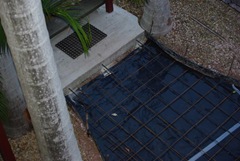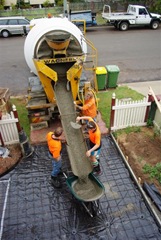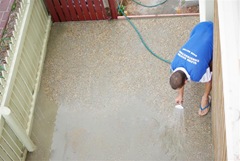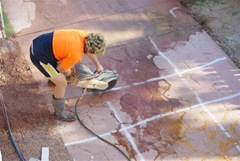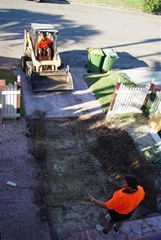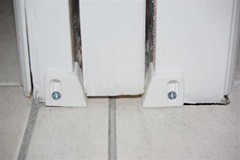 With most pocket sliding door that I have seen there are scratches on the inside and outside face of the door. These scratches are most often caused by the timber and other hardware that is inside the cavity that the pocket door actually slides into.
With most pocket sliding door that I have seen there are scratches on the inside and outside face of the door. These scratches are most often caused by the timber and other hardware that is inside the cavity that the pocket door actually slides into.
Our old upstairs bathroom door had this problem, and had some pretty unsightly scratches on the sliding door. Downstairs we have two pocket sliding doors, neither one of which I really desired to see scratched up as our old upstairs bathroom door was.
I found the solution at Bunnings in the sliding door hardware section for only about $4.50 per door.
As you can see in the photo above (click on it for a larger view) I purchased some sliding door guides to install on the door frame. The guides are just two small pieces of plastic designed to fit onto the bottom of the door frame. I had to trim the door guides a bit to get the perfect fit, but now the door can’t rock into the timber and door hardware that is inside the frame that the pocket door slides into.
I always like it when a cheap and easy solution comes up to fix a problem. I just wish they were all this easy …
